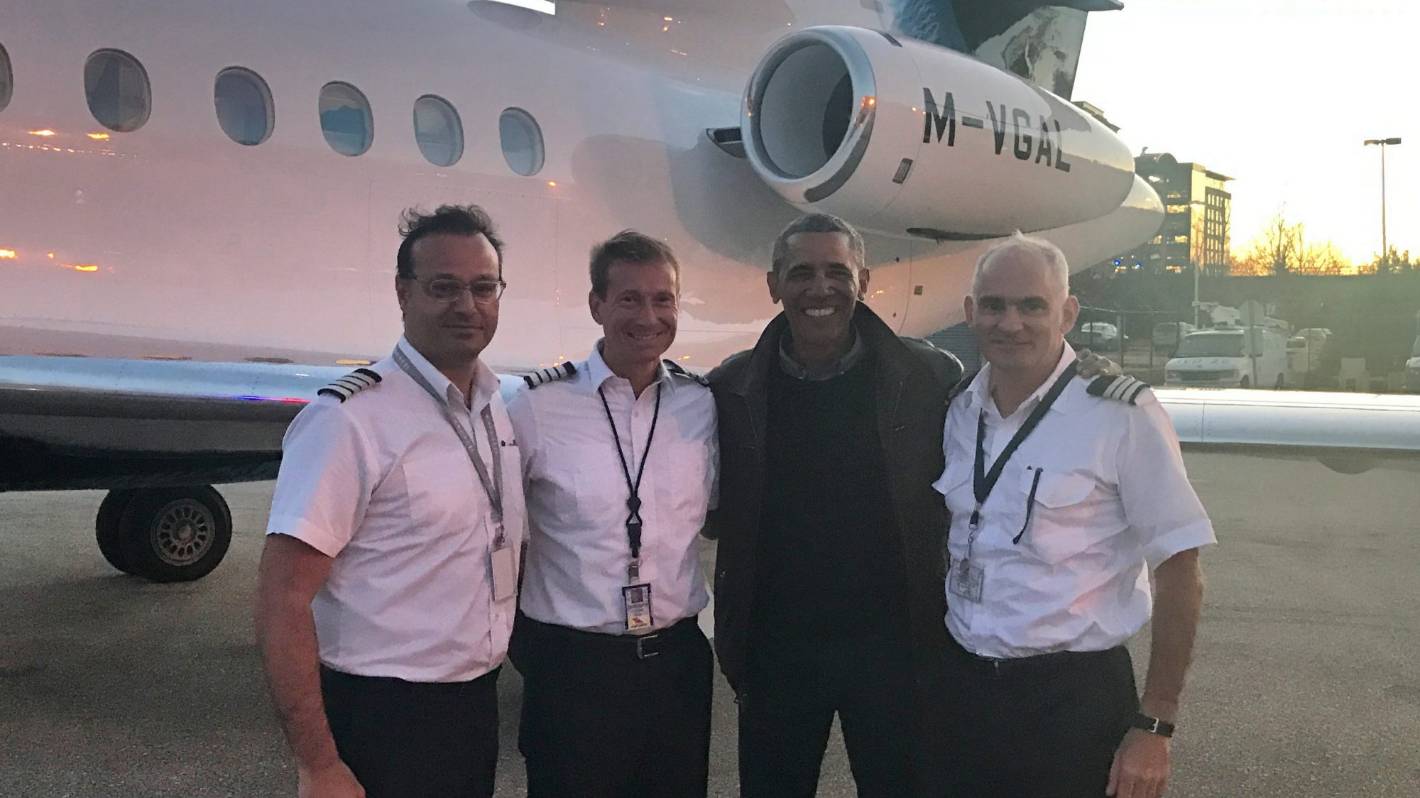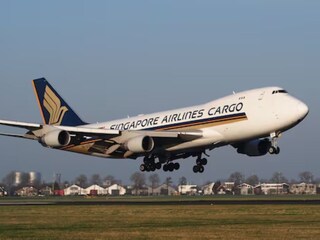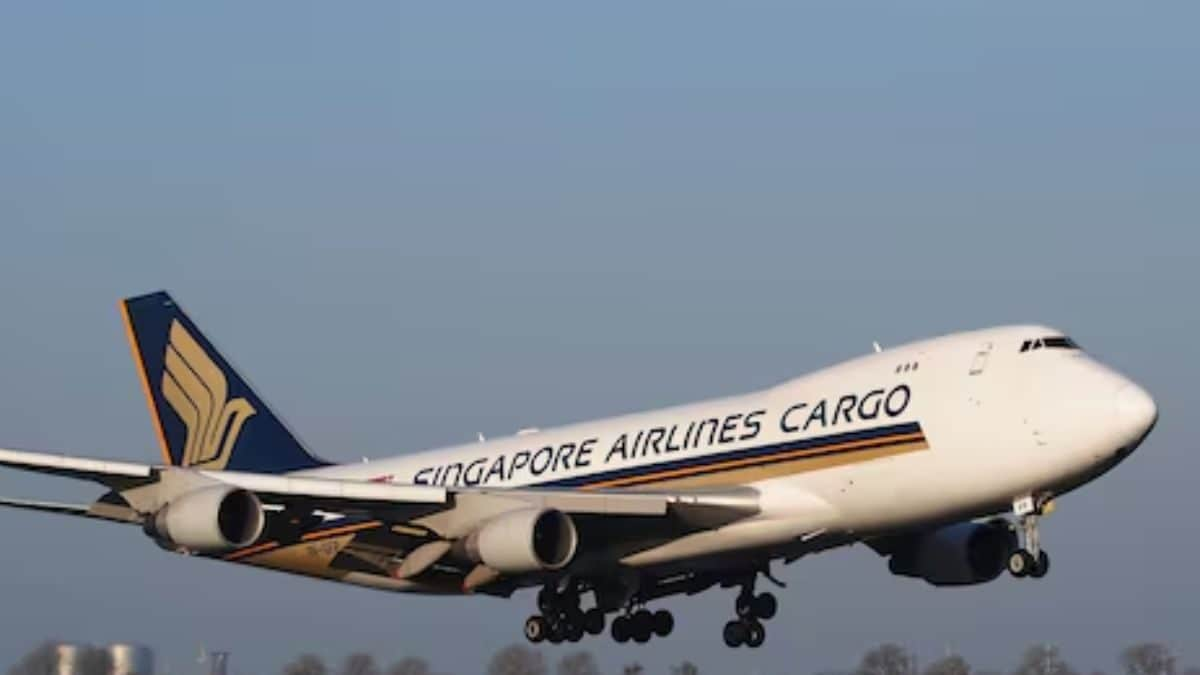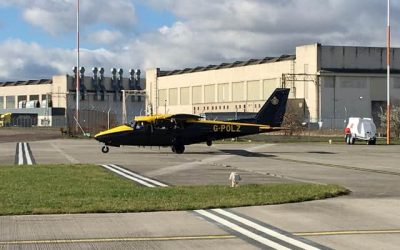New Zealander Craig Compain earned his wings in the RNZAF, before taking to the skies for the United Kingdom’s Royal Navy, becoming a hedge fund trader and eventually a private pilot charting trips for the likes of Richard Branson and the Obamas.
Below, in an edited extract from new book From the Pilot’s Seat by Fletcher McKenzie, he describes how his new career took flight.
The military is a competitive environment. In January 1993, I started with 15 recruits on the last RNZAF wings course based at Wigram, and only five of us graduated. Many of my fellow airmen on the course were more intelligent than I am, but a lot of them failed. Anyone can be a pilot if they have enough time to train. But because the training is so compressed, if you fall behind, you’ll dig a deep hole you’ll never get out of.
The scariest flight I had was in 2005 at Biggin Hill, a historic principal fighter base which protected London from German bombers during the Battle of Britain. The Sea Harrier was an unforgiving aeroplane, as demonstrated when I almost departed it during my display flight. With the Harrier, unlike a lot of other aircraft, you can only start the display with a certain amount of fuel, so it is a tight window.
If you’re too heavy with fuel, you cannot hover. So I took off as per the brief, and they asked me to hold. After a few minutes, I said I would either need to get on with it or land. I landed and waited on the ground, burning a lot less fuel. Then they asked if I could do the display in the other direction, so that I could land and turn off straight away (I couldn’t taxi on part of the runway as the jet blast would damage it). I should have said no…
I started the display from the take-off, completed and finished the display with no problems, then went into a turn, intending to do the slow 60-knot approach onto the runway. As I turned left, I realised I was meant to be turning right. These are decisions made in fractions of seconds. I turned back to the right, giving me a high yaw (twisting about the vertical axis), with the Harrier travelling between 30 and 90 knots.
Yaw can quickly lead to what’s called intake momentum – the airflow hitting the sides creates yaw, which generates more roll. You can’t overcome it. And you enter the classic spiralling death dive that Harriers are known for.
To get out, the drill is: full opposite controls, trigger the limiter, and go full power on the engine, getting as much air and thrust out as you can. As I was turning left to come back, I had too much yaw, and the nose dropped. I lost the nose control.
Getty Images
Harrier Aircraft descending an AV-8B Harrier aircraft attached to Marine Medium Helicopter Squadron 162 (HMM-162) descends to the flight deck of the amphibious assault ship USS Wasp (LHD-1). The squadron is embarked aboard the Wasp during the ship’s first deployment. Mediterranean Sea, 1991.
Black smoke poured from the nozzles as I tripped the limiters trying to get max power out of the engines. Thinking I was turning towards the crowd (this all happened in milliseconds), I pushed the throttle forward. I needed to get the nose past the edge of the crowd, then pull out before pulling the ejection handle, allowing the aeroplane to fall away from the crowd. I didn’t want to leave an aeroplane heading towards them.
Suddenly there was enough power. The yaw stopped. I got speed back to 30 knots, the nose picked up, the wings levelled and I hit the runway. Phew! Three seconds later, I was off the runway, parking next to a Typhoon, sweating buckets. At that moment, I thought, “This is my last display, that’s enough”.
Then a gentleman bought a Sea Harrier from the scrapyard that had my name on the side of it. He Googled my name and offered me a job at his hedge fund as a trader in London. You’d think this would be a completely different world, but, as I said earlier, there are similarities.
Then the 2008/2009 global financial crisis hit, and we got pummelled. I left. Not long after, someone called to ask if I would be interested in flying a business jet. Long story short, I ended up in a hotel room in Istanbul with a Russian guy in his underpants – the owner of the business jet.
He interviewed me via his number two, because he said he didn’t speak English. The meeting dragged on, becoming more and more uncomfortable. Too many questions in a bizarre environment.
Then he said, ‘You’ve never flown a big aeroplane before. How do I know you can fly the plane better than Captain Will [his lead pilot]?’
I thought I might as well just go for it, so I said, ‘Look, if I can’t fly the aeroplane better than Captain Will after three months, I’ll give you your money back.’ At which point, the Russian laughed. So much for not speaking English!
He looked at me and said, ‘Craig, three months long time.’ That was the end of the interview.
Supplied
From the Pilot’s Seat: Kiwi Adventurers in the Sky by Fletcher McKenzie is out now.
Twenty minutes later, Captain Will phoned saying, ‘I don’t know what you said, but he loved you.’ And that’s how I found myself flying corporate jets out of Moscow in 2010. The first time was a surreal experience. I had spent all those years training mainly to fight the Russians, yet here I was flying a jet into Moscow at night with fireworks going off (why, I don’t know).
I spent a couple of years flying with him. Then I ran an aviation medical company in London. I flew the Italian designer Roberto Cavalli for a while. A Formula 1 driver was the most difficult person I worked for. He didn’t seem to respect his crew, and with that attitude, you don’t get the best out of people. The wealthy always want to get somewhere faster than anyone else, with minimal fuss, but sometimes it’s just not possible, no matter how much money you have. And the crew on a business jet can cost the owner a lot of money if they want to.
For example, there can be a $10,000 difference fuelling up in one place compared to another. Some crews live the lifestyle of their client by staying in five-star hotels and driving around in limousines. With a large budget, you can hide those costs.
I started flying for a guy in Monaco, a first-time aircraft owner. He wanted me to be involved more in the management of the aeroplane, which exposed me to the finance side. In 2016, I left that company and started working with Sir Richard Branson, flying his Dassault Falcon 900, ‘Galactic Girl’. Unfortunately, we got rid of that one because of the pandemic, so then I started flying a Dassault Falcon 7X. When I took on the job, I didn’t even know where the British Virgin Islands were and never expected to be based there.
Getty Images
“There’s no room for error running a private jet company,” says Campain.
It was an interesting experience, with highs and lows. When I took over managing Virgin Charter Air, I wanted to increase our safety margins, and with some hard work and focus, and a couple of years later, we are in a great place.
The first thing I say to any employer is that they’re paying me to say, ‘No.’ It’s an important point for them to understand, because most people who die in aviation crashes (which usually have a degree of pilot error) do so because they didn’t say no to something, whether it be defective maintenance, flying somewhere 175 Gold-plated Skies that they didn’t feel confident about, flying a plane that they weren’t correctly rated on or experienced with, or flying into poor weather.
I suspect Sir Richard would rather not use a private jet, but for him it’s a necessary tool for his business. Living on a small island in the Caribbean, he needs one. Richard is the PR marketing ‘product’ for Virgin, so without a private jet, he couldn’t make it to all his companies around the world. He offsets all his carbon on his flights and is deeply invested in the environment.
The reason we pay our pilots more than an average pilot is because there’s a higher risk of failure – and the ultimate cost of failure is death. (It may surprise you to know that you’re more likely to die in a private jet than in a commercial airliner.) I often found myself fighting in the corporate boardroom, where people were quibbling over $20,000 a year in salary – the difference between hiring an average pilot versus hiring an above-average pilot.
I don’t ever want to do that again! It took five months of planning with the Secret Service. I couldn’t tell the other crew what was happening, and was only allowed to tell the first officer the plan the day before the flight.
All very hush hush. Then, of course, Americans being Americans, we flew into Palm Springs, where a 12-car motorcade turned up with lights flashing and all the bells and whistles to drop them off at the aircraft, which obviously drew attention.
While we got Barack on board the aircraft without him being photographed, someone got a picture of Michelle jumping on board. The aircraft has a fairly distinctive paint scheme, so they quickly worked out who it was. It was an interesting experience, for sure.
When I joined the air force, I don’t think I felt comfortable in my skin. I wouldn’t say that I was winging it in my twenties, but I wasn’t being particularly true to myself. What I now know is that you need to take time to understand people. Then you will get the best out of them.
There’s a lot of pressure on pilots, especially in the corporate world – pressure on pilots to do things that are outside the bounds of aviation law, because they’re trying to make money or the boss wants to get somewhere urgently. There have been too many accidents where people were asked to do something, but with no discussion about whether they were happy to do it.
There’s no room for error running a private jet company. I don’t want to be on my deathbed saying, ‘I wish I had done something different.’ Even though I’ve worked in aviation most of my life, I’ve tried different things. We get only one shot at life, so we have to make the most of it.
From the Pilot’s Seat: Kiwi Adventurers in the Sky by Fletcher McKenzie is out now







0 Comments